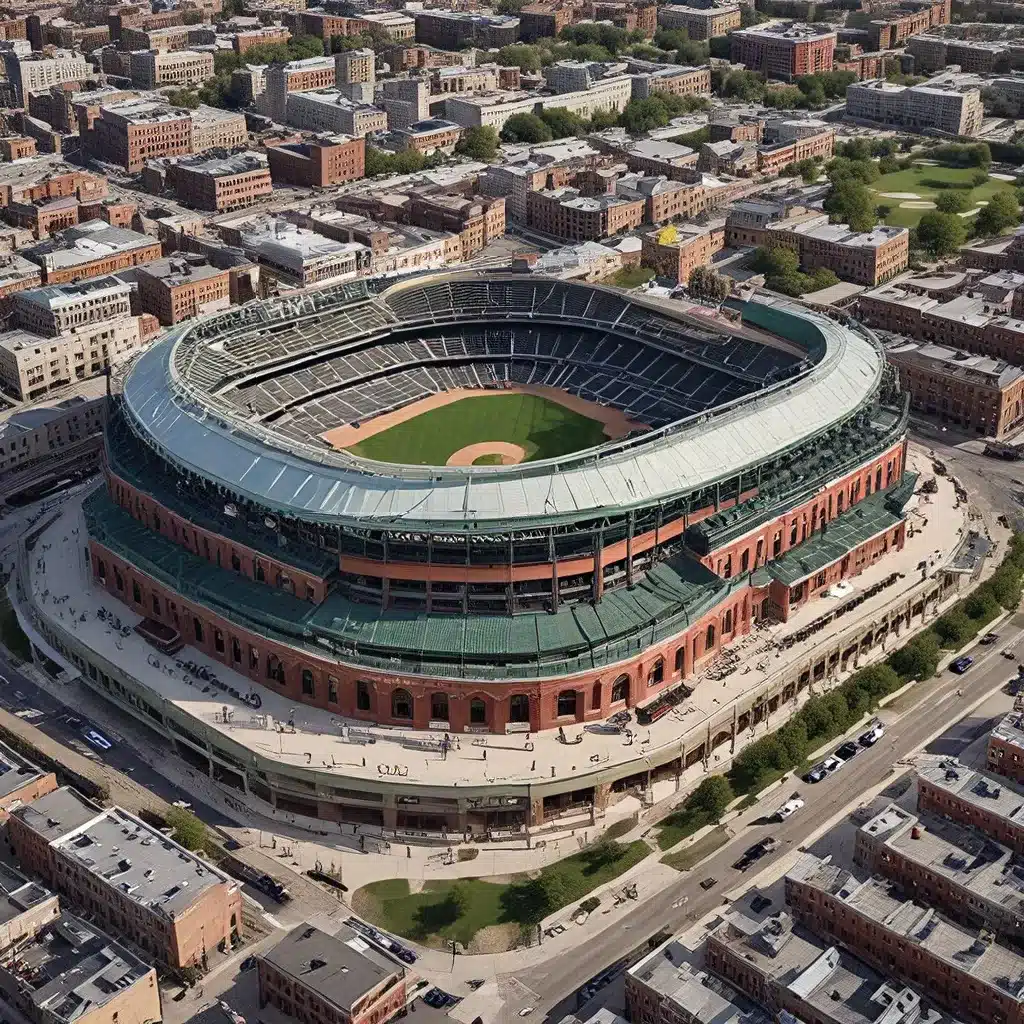
Nestled in the heart of Chicago’s Lakeview neighborhood, Wrigley Field stands as a living testament to the city’s rich sporting heritage and architectural ingenuity. As one of the oldest and most iconic ballparks in Major League Baseball, Wrigley Field has captivated generations of baseball fans and architecture enthusiasts alike, serving as a beloved landmark that transcends the boundaries of sport.
The Birth of a Ballpark
Wrigley Field’s origins can be traced back to 1914, when the ballpark was originally constructed as Weeghman Park, the home of the Chicago Federals, a team in the short-lived Federal League. The renowned architect Zachary Taylor Davis was tasked with designing the new stadium, which was conceived as a state-of-the-art facility that would set a new standard for baseball venues.
Davis’ design drew inspiration from the classical elegance of European architecture, blending it with the practical needs of a modern baseball stadium. The result was a stunning structure with a distinctive red-brick façade, arched entryways, and a timeless aesthetic that has endured for over a century.
An Evolving Icon
In 1920, the ballpark was acquired by the Chicago Cubs, who would call Wrigley Field their home for the next century. Over the years, the stadium underwent a series of renovations and expansions, each one carefully executed to preserve its historic character while adapting to the changing needs of the game and its devoted fanbase.
One of the most notable additions was the installation of ivy-covered outfield walls, a trademark feature that has become synonymous with the Wrigley Field experience. The lush greenery not only adds to the park’s natural beauty but also serves as a unique challenge for outfielders, adding an extra layer of complexity to the game.
Architectural Marvels
Wrigley Field’s architectural significance extends beyond its traditional ballpark design. The stadium’s renowned clock tower, with its iconic four-faced timepiece, has become a beloved landmark visible from miles away. The tower’s striking presence, combined with the stadium’s iconic marquee and the vibrant Wrigleyville neighborhood that surrounds it, create a captivating visual symphony that has made Wrigley Field a must-visit destination for both sports enthusiasts and architecture aficionados.
The stadium’s interior is equally impressive, with its intimate seating arrangement and distinctive concrete grandstand. The iconic hand-operated scoreboard, perched atop the outfield wall, further enhances the ballpark’s vintage charm, offering a glimpse into the game’s rich history.
Preserving the Legacy
As the years have passed, Wrigley Field has remained a cherished institution, weathering the test of time and evolving with the needs of the modern game. In recent decades, the stadium has undergone a series of renovations and upgrades to ensure its continued relevance and preservation.
The most significant of these efforts was the $750 million renovation project completed in 2016, which modernized the ballpark’s infrastructure while respecting its historic character. This comprehensive overhaul included the addition of luxury suites, improved concessions, and enhanced accessibility, all while maintaining the stadium’s iconic features and timeless charm.
A Timeless Experience
Today, Wrigley Field continues to captivate visitors from around the world, offering a truly unique and immersive experience that seamlessly blends the past and present. From the roar of the crowd during a crucial moment in a game to the serene beauty of the ivy-covered walls, the stadium’s enduring allure lies in its ability to transport visitors to a bygone era while still catering to the demands of the modern sports landscape.
As you step through the historic archways and take in the sights and sounds of Wrigley Field, it becomes clear why this architectural marvel has become a cherished symbol of Chicago’s identity and a must-visit destination for anyone exploring the city’s rich cultural tapestry. Whether you’re a lifelong Cubs fan or a first-time visitor, the experience of witnessing a game at Wrigley Field is one that is sure to leave a lasting impression, cementing the stadium’s place as a true architectural and cultural treasure.
So, if you find yourself in the Windy City, be sure to explore the halls of this iconic ballpark and immerse yourself in the timeless magic that is Wrigley Field, a testament to the enduring power of sports, architecture, and the human spirit.

